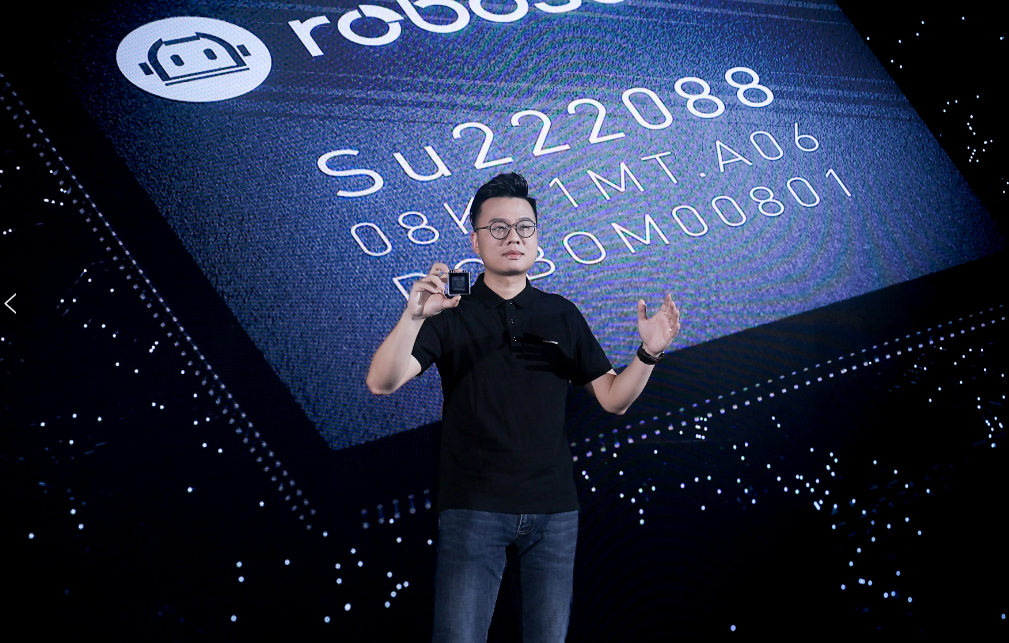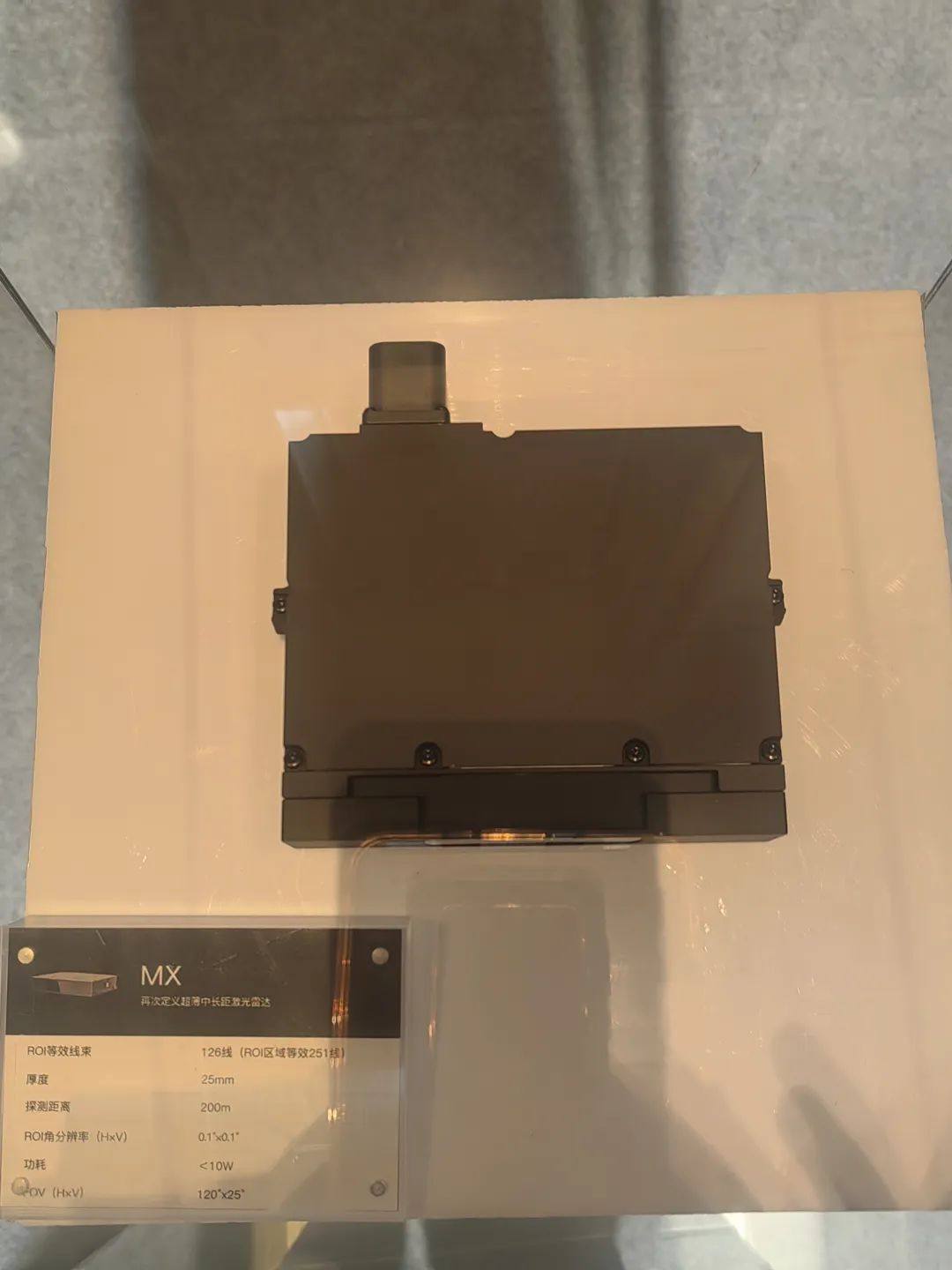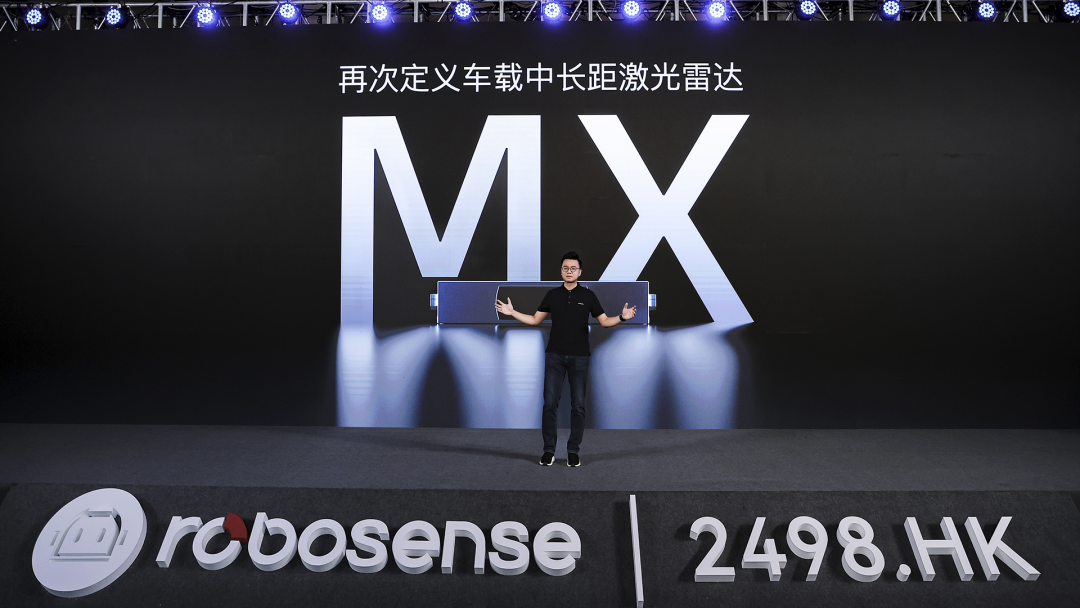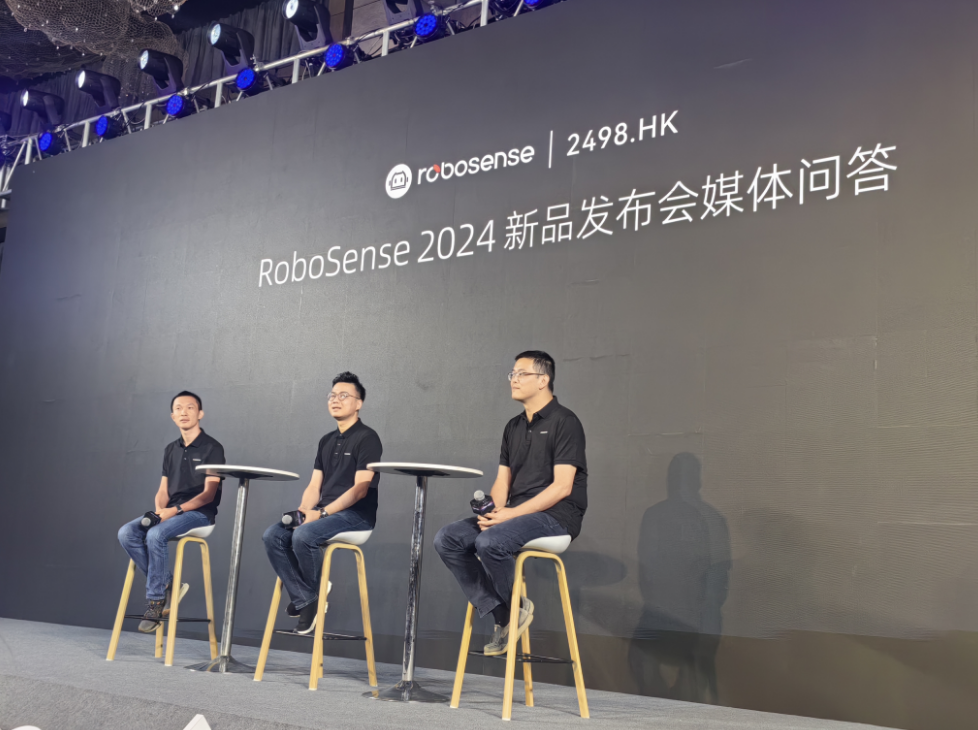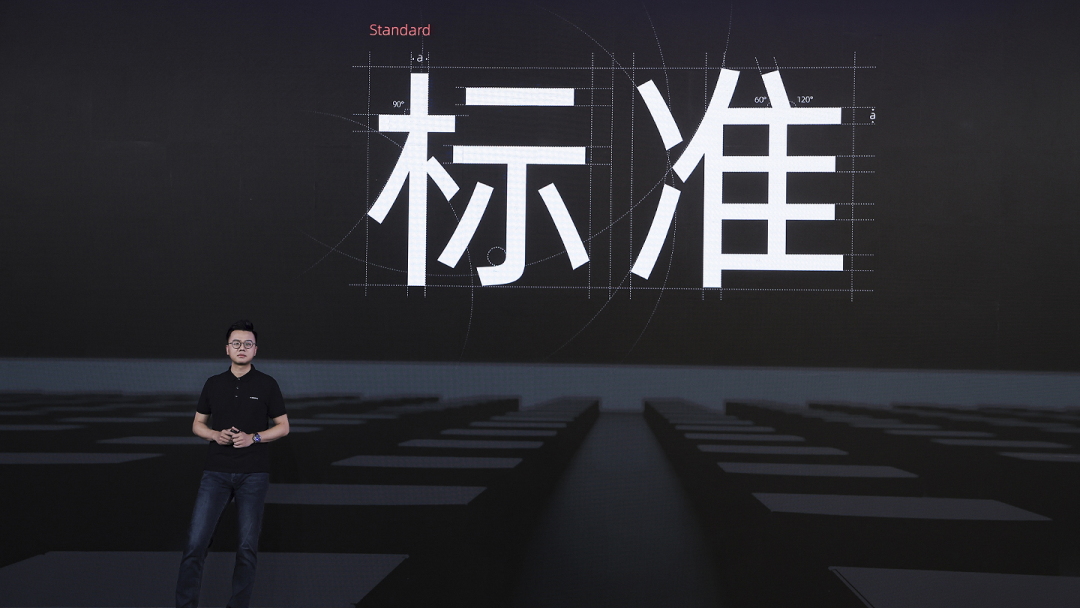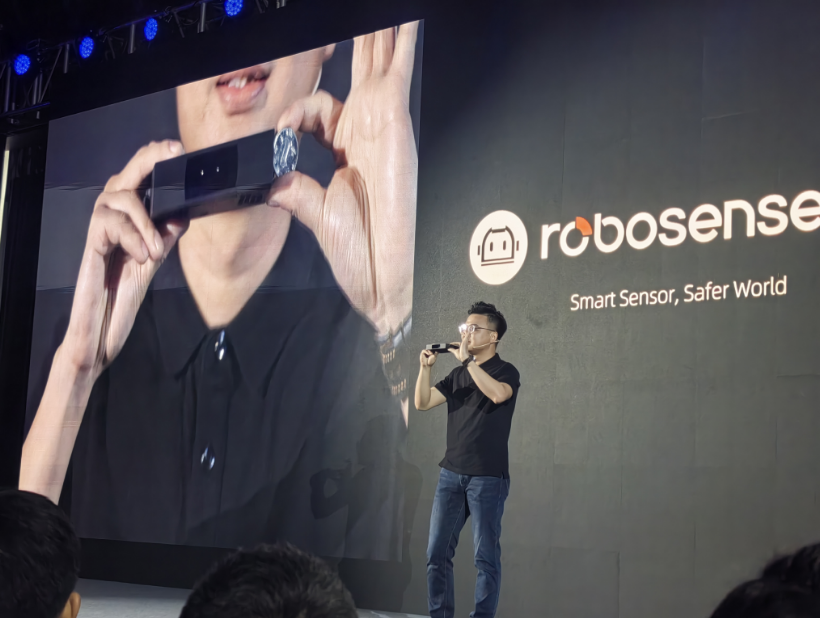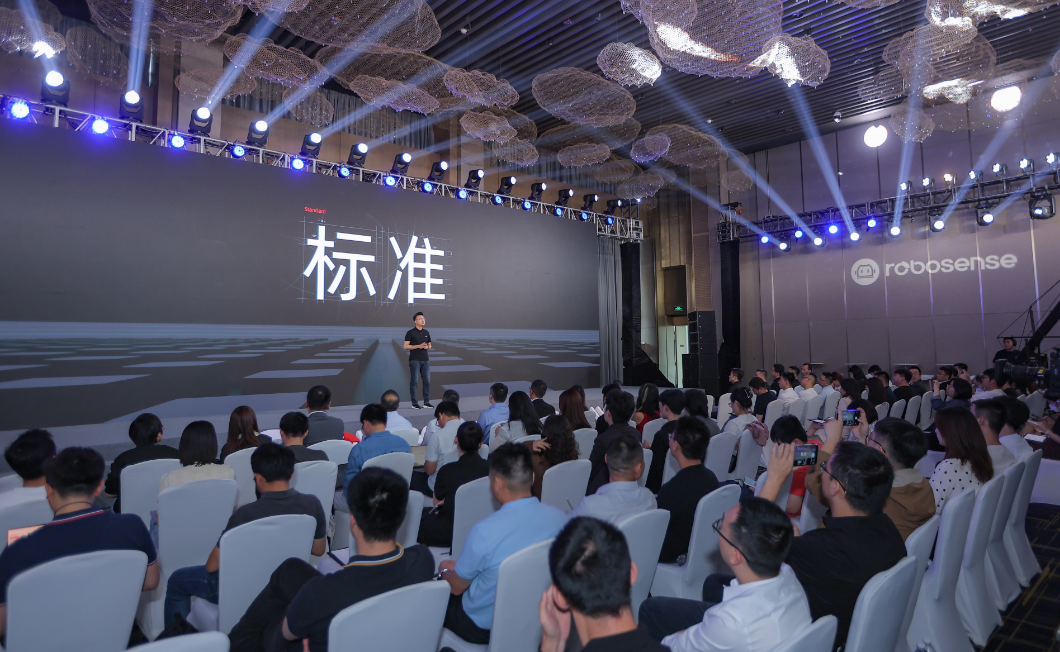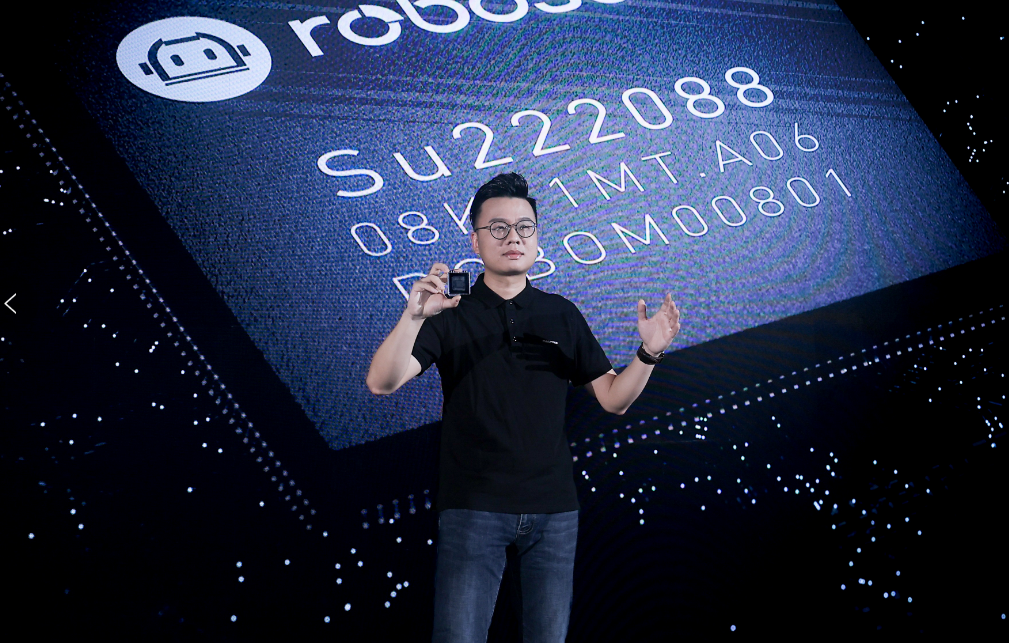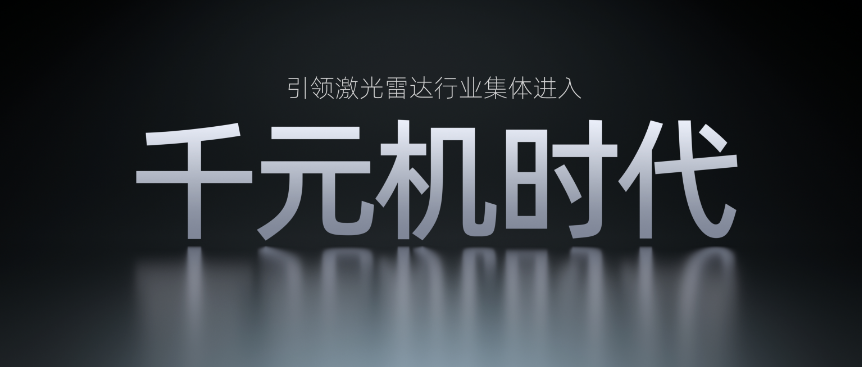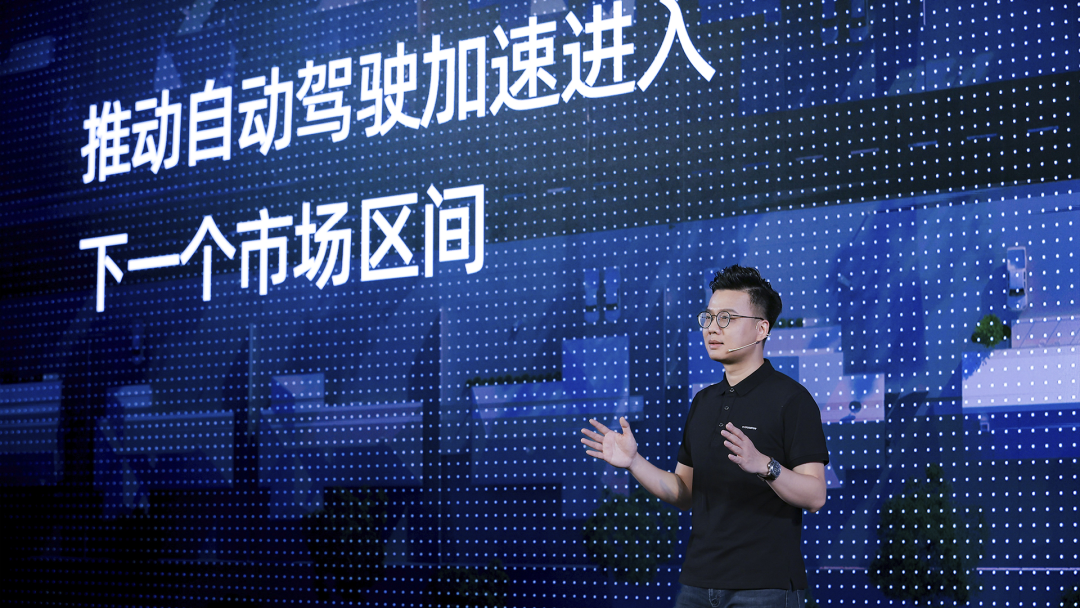MX will start the mass production of the first project based on about US$200. Qiu Chunchao said that he will strive to reach the level of 1,000 RMB as soon as possible. This is a big blow to the low-cost purely visual smart driving route.
"MX", read this way, has the same meaning as NVIDIA Orin X.
In a new product launch conference of a lidar company, you can actually see the shadow of NVIDIA?
On April 15, RoboSense held a new product launch conference in Shenzhen, demonstrating a new generation of medium and long-range lidar MX.
MX has a 25mm thin and light profile, ultra-quiet operation and ultra-low power consumption of less than 10W.
Its longest range can reach 200 meters, field of view 120° × 25°, 126 lines (equivalent to 251 lines in the ROI area), and the intelligent "gaze" function has been upgraded, and the ROI is globally adjustable.
Qiu Chunchao, CEO of RoboSense, said that MX has set a new benchmark of "good looks, low cost, and strong performance" for the next generation of lidar.
Will the cost be so low that even Musk will be convinced?
Qiu Chunchao made it clear at the scene:
MX will start the mass production of the first project based on around US$200, and will strive to reach the level of 1,000 RMB as soon as possible.
RoboSense responded to Zhijia.com that this will be the cheapest car-grade main lidar in history.
At present, MX has secured three new mass production projects, and the first one will achieve large-scale mass production in the first half of 2025.
Looking back on the past year in the lidar industry, entering 2024, lidar companies have reached the stage of increasing product volume and climbing scale. However, behind the pursuit of scale, it also involves the adjustment of business models and the strategy of exchanging price for volume.
Not long ago, RoboSense released its first financial report after listing: total revenue in 2023 will be 1.12 billion yuan, a year-on-year increase of 111.2%. But it is still not profitable, with an adjusted loss of 434 million yuan in 2023.
Loss is a problem that lidar companies have not been able to solve in the past two years.
But the reality is often crueler. Before each company can achieve profit figures in its accounts, the focus of the lidar competition is no longer the competition for mass production in the first half. With the emergence of endless new solutions and new technologies for intelligent driving, Cost-effectiveness and deployment rate have become the key words for competition in the second half.
In Qiu Chunchao's view: "In the early days of lidar, application exploration was strength, and performance was the only criterion for lidar, but this was from the 0-1 era."
“If you want to promote large-scale mass production of products, it depends on how to balance the multi-dimensional requirements of performance, cost, volume and other highly integrated products.。”
Just half a month ago, DJI Automotive also launched its own Laser Vision fusion solution, a Laser Vision solution that integrates cameras and lidar scanners. It is intended to emphasize the concept of front-to-front fusion and the integrated design concept.See details《走进大疆车载:一个悄悄靠近智驾王位的低调团队》)。
As a member of the smart driving industry chain, Base is also based in Shenzhen. Both companies have proposed the concept of "integration", and it is inevitable that they will be compared horizontally.
As a result, a sharp question was thrown to Qiu Chunchao from the media gallery——
"Mr. Qiu, what do you think of the laser radar of the eye-stimulating sensor released by DJI Automotive not long ago? What are your thoughts on their concept?"
"I think they have a unique understanding and their ideas are different from other companies. In the final evolution of the trend, we do not rule out the possibility of integrating the camera and lidar sensors. But they have now put the lidar back in. What does that mean? Haha.”
RoboSense is not the first to propose chip-based and platform-based lidar, but RoboSense is the pioneer in mass production and large-scale vehicle use. What does the trend of "chip-based" lidar mean for smart driving?
01.
Chipization has become the most critical breakthrough point
For an emerging industry, at every stage of its development, technological breakthroughs often serve as a benchmark.
In Qiu Chunchao's view, in the wave of lidar moving from 0 to 1, large-scale mass production is the key word and performance is the criterion.
However, the era of stacking devices in a violent aesthetic way to pursue performance will eventually pass. If you want to promote large-scale mass production of products, you need another ability.。
In the second half of the 1-100 competition, Qiu Chunchao’s answer is that chip-based capabilities are the most critical breakthrough point for lidar companies, which not only improves product integration, but also improves performance and reduces costs.
M-Core is the highlight of Sagitar's conference, and MX is equipped with this fully self-developed SoC chip.
It is reported that this chip was developed by Sagitar over a period of three years, with hundreds of millions of dollars invested behind it, in order to achieve a significant reduction in costs and increase the level of integration.
The first is to achieve the integration of processing chips.
According to Qiu Chunchao, the M-Core chip equipped with MX integrates a 4-core 64bit APU + 2-core MCU, with a main frequency of 1GHz and an 8M Byte on-chip storage unit, which has powerful computing processing capabilities. At the same time, M-Core integrates a multi-threshold TDC (time to digital converter), which increases the weak echo detection capability by 4 times, which is equivalent to increasing the distance resolution capability by 32 times.
Most the biggest breakthrough is that M-Core integrates the entire back-end circuit into a single chip. While controlling costs, the MX motherboard area is reduced by 50% and power consumption is reduced by 40%.
M-Core also uses RoboSense's self-developed two-dimensional MEMS chip scanning technology. This is what Qiu Chunchao emphasized most at the scene: RoboSense's MEMS chip scanning technology is regarded as one of the most recognized technologies by car company customers, because it is directly related to Car-level mass production speed.
Different from the one-dimensional scanning system usually used by other lidar products on the market, the two-dimensional scanning MEMS scanning chip has a larger galvanometer size. Combined with the two-dimensional scanning structure, it brings a wider field of view and a larger deflection angle. , longer detection distance and higher resolution, while significantly simplifying the design structure of the lidar.
In addition to achieving efficient scanning performance, each transceiver of the M platform adopts a modular design and can be independently produced and assembled. This design makes the M platform very suitable for large-scale mass production.
The principle is that through the modular platform design of the transceiver module and the iteration of common chip devices in the upstream supply chain, only pin-to-pin upgrade of the laser transceiver chip device in the transceiver module can complete the detection performance improvement and achieve the minimum design Iterations where the cost of change brings the greatest performance improvement benefit.
In summary, through the full-stack chip reconstruction of the scanning, processing, and transceiver systems, the number of MX chips can be reduced by 69% compared to the M1 Plus, and its motherboard area is significantly reduced by half.
At present, RoboSense's lidar product line covers multiple platforms such as R, M, E and F, forming a rich product matrix.
RoboSense's M platform is the core product line of automotive-grade solid-state lidar designed specifically for ADAS applications and is widely used in ADAS systems. As the main radar of the vehicle, the M platform lidar is responsible for daily lidar functions.
In 2022, the sales volume of M1 lidar products will reach approximately 36,600 units, and the sales volume of M1 Plus will reach approximately 4,300 units.
In early 2024, RoboSense released the M3, the fourth product of the M platform, at CES. M3 adopts a 940nm laser transceiver solution, which can achieve 300m@10% ultra-long distance measurement capability and ultra-high-definition three-dimensional imaging capability with angular resolution of 0.05°x0.05°.
This time, the MX released by RoboSense is regarded as a new generation product that connects the previous and next M platform, and its importance is self-evident.
MX will start the mass production of the first project based on about US$200. Qiu Chunchao said that he will strive to reach the level of 1,000 RMB as soon as possible.
02.
RoboSense: Entering the era of thousand-yuan machines
According to Qiu Chunchao's estimation, at the 2024 Beijing Auto Show, there will be 68 models equipped with lidar, of which 38 models are expected to be equipped with RoboSense products.
RoboSense's plan for the MX is that it will be optional on models priced at 150,000 yuan and standard on models priced at 200,000 yuan.
RoboSense’s ambition is to lead the lidar industry collectively into the era of thousand-yuan machines.
"I don't dare to look forward to models equipped with cars priced below 150,000 yuan. What I'm looking at right now is the range of 150,000-200,000 yuan." Qiu Chunchao replied when answering the biggest competitive issue facing the RoboSense.
The impossible triangle that high-end intelligent driving often faces is: high quality, low cost and large scale, which are almost impossible to achieve at the same time. Currently, most urban smart driving solutions on the market need to be equipped with at least one lidar and several millimeter-wave radars. The price of high-end smart car models such as NIO, Xpeng, Ideal, and Huawei basically exceeds 200,000 yuan.
Zhijia.com once analyzed this in the article "Lidar Apocalypse: Surviving the Long Season丨Looking Back at 2023":
The reason for its high cost is that lidar is a precision optical instrument that requires expert engineers to spend a lot of time debugging and correcting, and the time for debugging and correction increases geometrically as the radar harness increases. For example, it takes several hours to correct a 16-line radar, and nearly two days to correct a 32-line radar. The time to correct a 64-line radar is measured in weeks, so as heard in the market, the 64-line laser The output of radar is very low. It is reasonable for a manufacturer to only produce a few units a week, and the unit price is tens of thousands of dollars. The price range of cameras, which are also sensors, is only about a few hundred yuan. This coincides with the fierce price war that car companies are now fighting. There is no other way but to reduce expensive and redundant sensor components like lidar, so cameras have become a cost-effective solution. Higher replacement parts.
Currently, in addition to the M platform, RoboSense's lidars also include R, M, F and other platform products.
R platform products are traditional mechanical lidar, mainly used in robotics and other non-automotive industries.
M and E platform products are automotive-grade solid-state lidars currently mainly used for ADAS applications. E platform products are specially designed for short-range detection and are installed outside the main lidar used for blind spot detection to cooperate with M platform products. , providing zero blind spots for cars.
F platform lidar products are still under development and will support ultra-long detection ranges and are expected to be used in commercial vehicles, railway transportation and other scenarios that require longer detection distances.
At this year’s CES, most lidar manufacturers’ promotions focus on ultra-long range, high performance, and cost-effectiveness to gain attention. With the decline of L4 autonomous driving, we can learn from the current focus of the above players on high-performance lasers. Radar and blind-filling lidar may be becoming key puzzle pieces for L3.
At present, the leading car companies that have deployed L3 intelligent driving functions are basically equipped with lidar. In a sense, it is indeed the best weapon to help car companies mass produce and implement urban NOA.
Qiu Chunchao said that he does not want to use specific definitions of product levels to limit the different possibilities of lidar being installed on high-end smart cars.
In the future, RoboSense may develop lidars of different routes in two directions: technological advancement and technological equality. According to Qiu Chunchao's response, MX will take the path of technological equality, and its main mission is to catch up with RoboSense's lidar penetration rate in high-end smart driving.
Entering 2024, the pure visual route will be below L3, and the urban high-end smart driving stage will show strong vitality. The Jiyue jointly built by Baidu and Geely will promote the mass production of this technology. Huawei-empowered smart driving S7 will also launch pure Visual high-end smart driving. At the same time, GAC and Volkswagen will promote the implementation of high-end smart driving under a purely visual route.
Will this trend affect the scale of lidar? Qiu Chunchao did not answer this question directly, but after the "technological equality" of lidar has achieved cost reduction, it is increasingly unnecessary to fall into the dilemma of "choosing one or the other" between lidar and pure vision technology routes.
The original article was originally published on WeChat public account (Zhijia.com): Priced at only US$200, RoboSense’s innovative new-generation lidar MX counters the purely visual route
